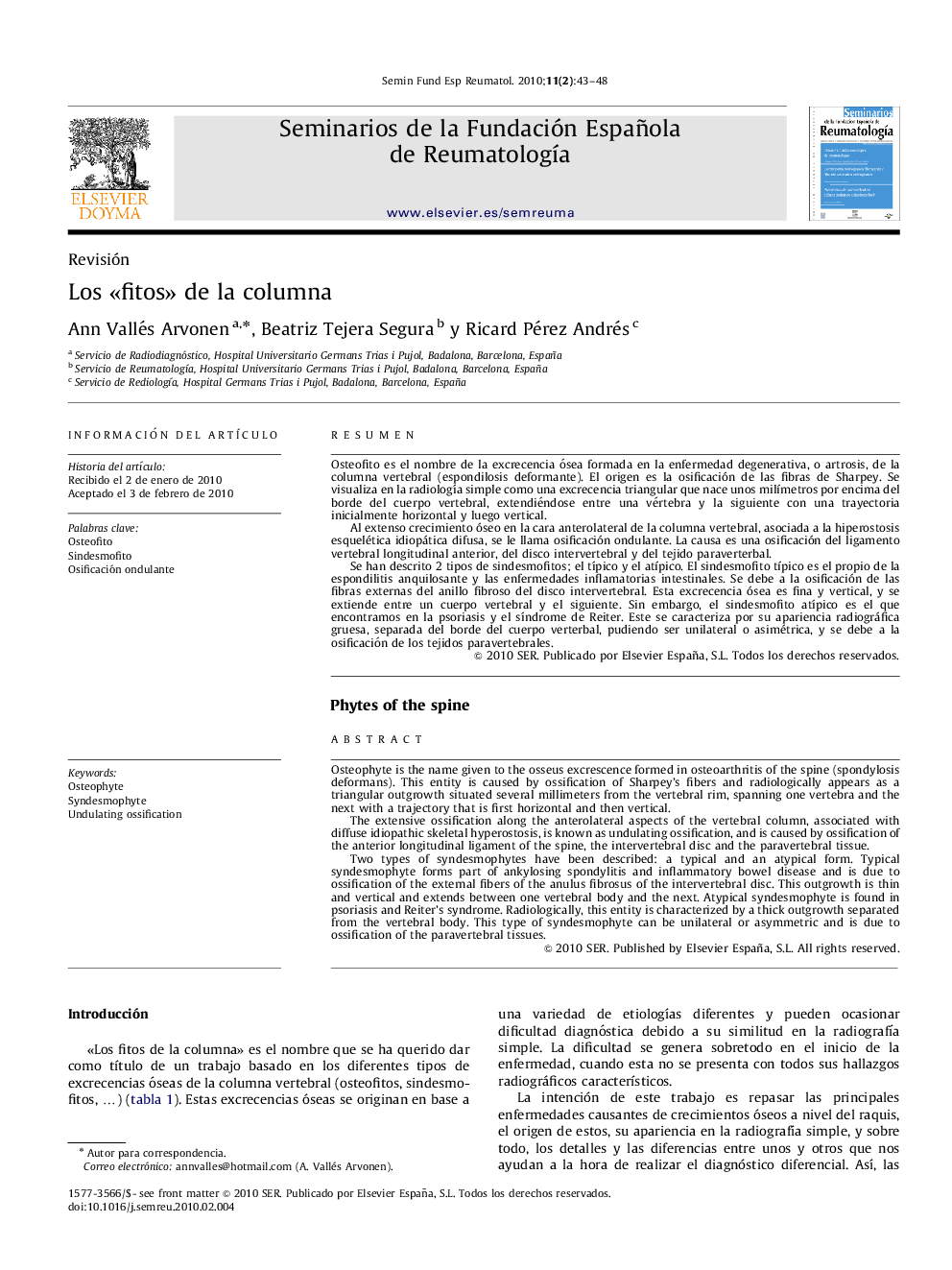| Article ID | Journal | Published Year | Pages | File Type |
|---|---|---|---|---|
| 3391129 | Seminarios de la Fundación Española de Reumatología | 2010 | 6 Pages |
Abstract
Two types of syndesmophytes have been described: a typical and an atypical form. Typical syndesmophyte forms part of ankylosing spondylitis and inflammatory bowel disease and is due to ossification of the external fibers of the anulus fibrosus of the intervertebral disc. This outgrowth is thin and vertical and extends between one vertebral body and the next. Atypical syndesmophyte is found in psoriasis and Reiter's syndrome. Radiologically, this entity is characterized by a thick outgrowth separated from the vertebral body. This type of syndesmophyte can be unilateral or asymmetric and is due to ossification of the paravertebral tissues.
Keywords
Related Topics
Health Sciences
Medicine and Dentistry
Immunology, Allergology and Rheumatology
Authors
Ann Vallés Arvonen, Beatriz Tejera Segura, Ricard Pérez Andrés,
